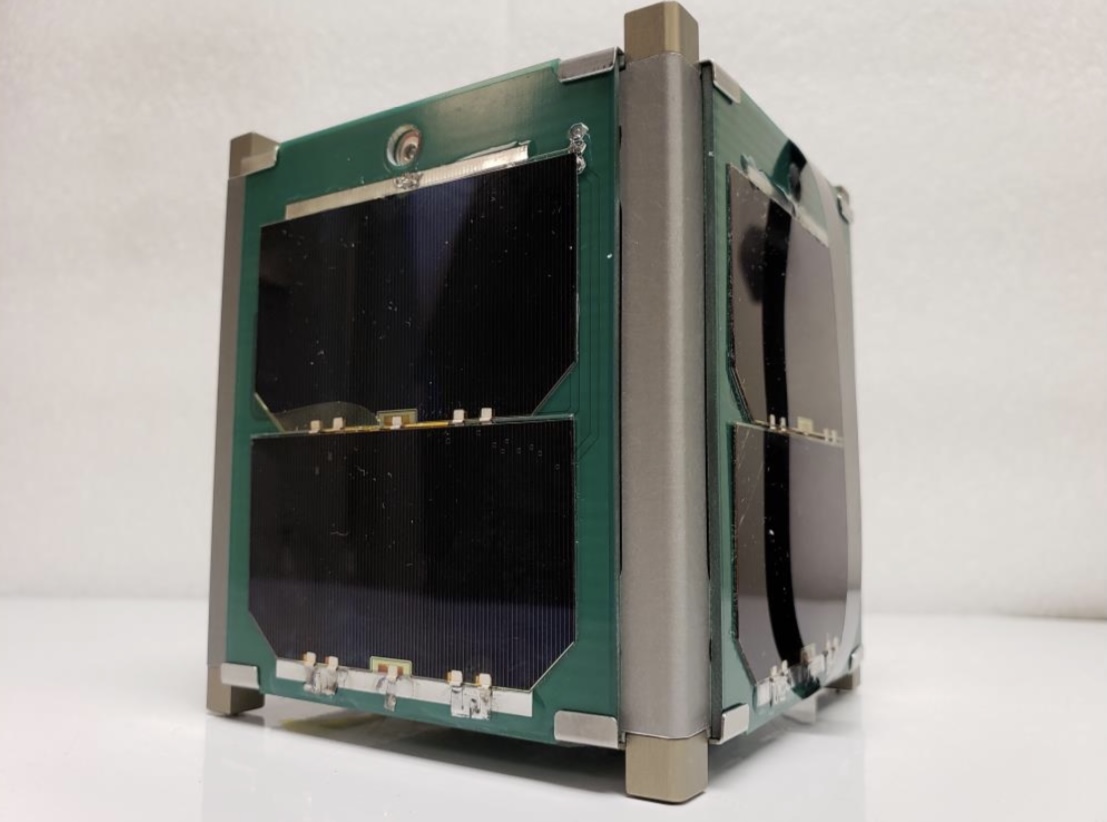Student-built satellite goes supersonic

Over 100 people, including students from Hawai‘i Island schools and the University of Hawai‘i (UH) and faculty from UH and the Hawai‘i Science and Technology Museum (HSTM), contributed to the creation of “Hiapo,” a small satellite equipped with sensors to measure Earth’s magnetic field.
“Our team took this project from concept to launch and we learned so much along the way,” said Christian Wong, director of HSTM, a Hilo-based science education non-profit. “Developing a science mission, designing the spacecraft, testing and delivery, and meeting the required specifications—it’s a pretty complex process. We certainly could not have done it without the guidance of our partners at the Hawai‘i Space Flight Laboratory [HSFL] at UH Mānoa.”
Through the HSTM, Wong runs various rocketry and robotics programs for students in elementary through high school. Wong had an idea to provide a real-world experience for the students. He asked Amber Imai-Hong, an avionics engineer with the HSFL at UH Mānoa’s School of Ocean and Earth Science and Technology, if they could develop a satellite on a shoestring budget.
“It was very reminiscent of the early days of robotics in Hawai‘i,” said Imai-Hong. “We gathered up all sorts of old parts from the Hawai‘i Space Flight Lab and made a design plan. It was an exciting challenge.”
Imai-Hong, and Heather Bottom, an aerospace engineer from NASA JPL provided training in design and project management as well as hands-on skills such as soldering and circuit assembly in a “clean room” provided by UH Institute for Astronomy. Additionally, the Hiapo team of students in grades 3-12 and undergraduates, staff, and faculty assembled components and tested instrumentation.
“Most students had less than a year of experience with satellite design or rocketry when they started working on Hiapo,” said Imai-Hong. “This project gave many interested and enthusiastic students the knowledge and confidence to become leaders in their groups.”
Launch day
After two years of work, the miniature CubeSat satellite, measuring just four inches on each side, was ready for launch. On September 2, 2021, Hiapo was aboard the maiden launch of the Firefly Aerospace’s Alpha Launch Vehicle which took off from Vandenberg Airforce Base in California.
Unfortunately, about two minutes into the launch, after hitting supersonic speed, the rocket experienced an anomaly and the engine failed.
“Although Hiapo didn’t make it into orbit, this one project inspired a movement here at UH to lower the bar of entry for students who want to join the field of aerospace engineering,” said Imai-Hong.
“I consider this a huge accomplishment for Firefly and all members of the Hiapo team,” said Wong. “We got a lot out of the experience. This is a once in a lifetime opportunity for our organization, the students who were a part of this and the community in Hawai‘i. CubeSats can be an industry here in Hawai‘i.”
Future education opportunities
Wong is looking forward to future projects with HSFL which was recently awarded a Governor’s Emergency Education Relief grant to create opportunities for public, private, and charter school educators interested in incorporating spacecraft hardware into their curriculum. Additionally, the team recently learned that they may be getting another opportunity for a spot on one of Firefly’s next launches so they are working hard to take another shot at getting into space.
Their goal with projects like these is to create a pipeline for students—wherein they have opportunities to join robotics clubs, compete in rocketry competitions, attend UH Mānoa and join the high-tech workforce.
“Hawai‘i is one of the best places in the world to do CubeSat based research because of our proximity to the equator,” said Wong. “Having this opportunity for our keiki to explore space from their classrooms is just out of this world.”
Educators interested in working with HSFL are encouraged to visit www.hsfl.hawaii.edu/project-poke
Read also on UH News.




